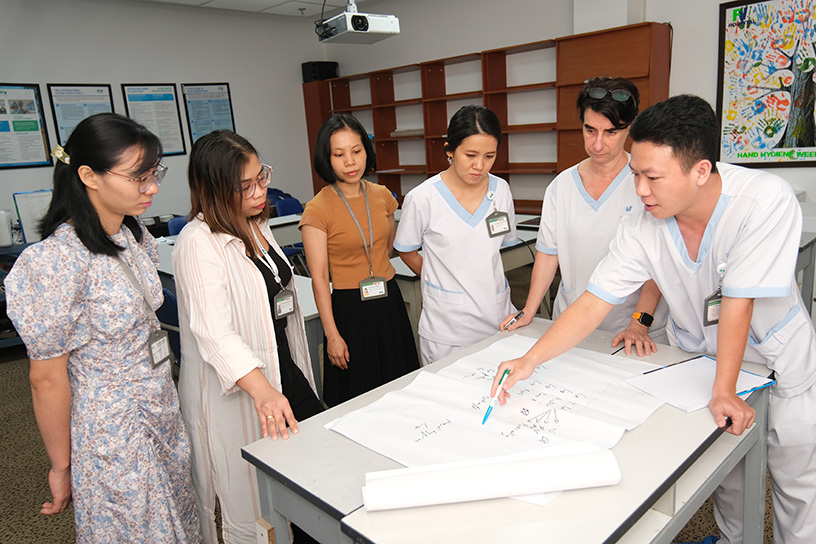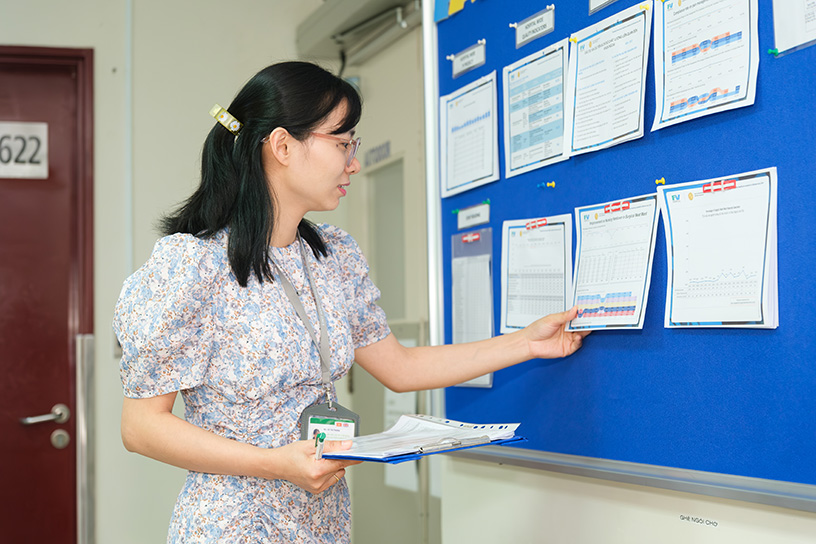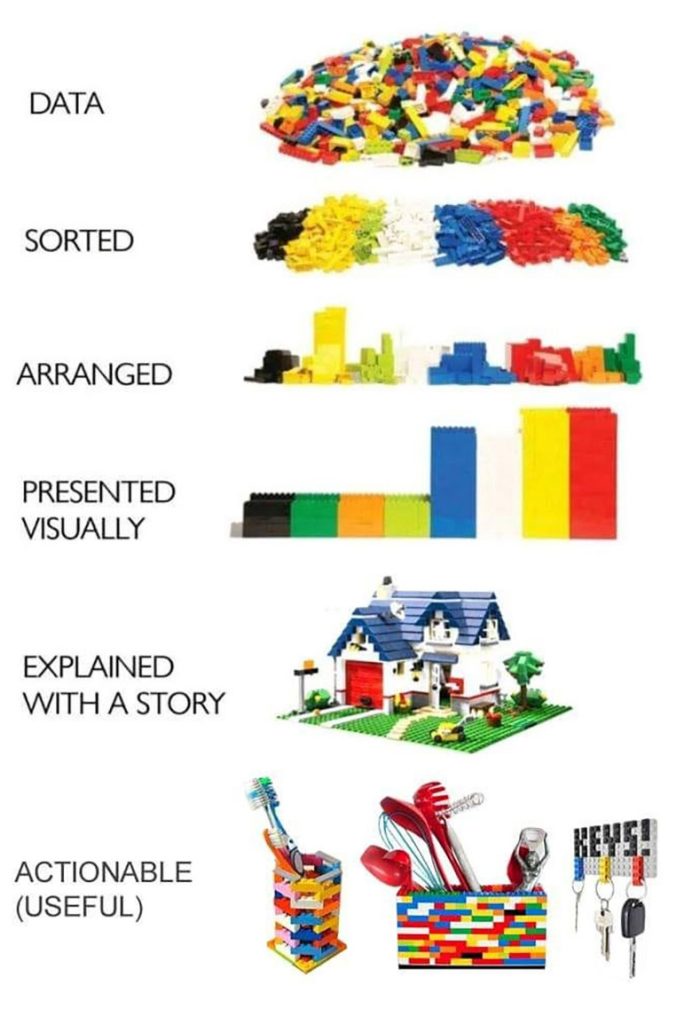At the beginning of the year, the FV Family (FVF) had a discussion with staff from the Quality & Performance Improvement team of the Quality Management Department to better understand how the process is helping FV “refresh” itself through each phase of its development. We gained insights from our improvement practitioners will help find ways to enhance our work performance.
(FVF): With over 5 years in this field, could you please share with us what are the common myths about “quality improvement”?
Ms Vo Thi Phuong (Quality & Performance Improvement Officer): People often overlook quality improvement, assuming it’s a macro-level task requiring significant time and resources, or some units believe they have nothing to improve. However, in reality, improvement starts with simple and familiar things. For example, your work may still run smoothly, but you lack leisure time; minor errors may arise with increasing frequency; or you invest more time in a task, yet the results remain unchanged… that’s when you should consider process improvement.
We’ve undertaken projects such as “promoting hand washing habits” among staff, reducing patient waiting times at outpatient department, and many more. Improvement can be envisioned as necessary from everyday activities to treatment processes. This will support individuals and various departments.
(FVF): How does the team usually identify areas that need improvement?
Ms Phuong: We rely on statistical sources of data, measured in the departments, but the majority of “valuable and effective problem sources” are directly reported by teams when they recognise their issues. When departments propose solutions to improve, we will meet, discuss, and clarify their goals before collecting data. If desires are unclear, data collection won’t be useful.
Currently at FV, nursing is the most proficient group for improvement process; they also consistently identify and propose obstacles requiring improvement in their work processes.

Ms Tran Ha Tuong Vi (left) and Ms Vo Thi Phuong (middle) – Two members of the Quality & Performance Improvement team discussing a new project in the Paediatric Department
(FVF): What are the challenges faced by the Quality & Performance Improvement team?
Ms Mha-An Elejerio Sastrillo (Quality & Performance Improvement Manager): We continuously aggregate numerous quality indices and departmental project data, sometimes up to 120 indices; analyse results and submit monthly reports to all departments to track and implement necessary measures. Additionally, we closely collaborate with various departments to help them develop their quality measurement, identifying future performance improvement projects.
Last year, we embarked on a new journey with Power BI, which was a significant challenge, but it helps generate valuable information; “meaningful data,” used to execute reports that are much easier for each department.

Ms Mha-An Elejerio Sastrillo (2nd from left) analysing improvement proposals from the Physiotherapy & Rehabilitation Department
(FVF): With so many challenges, how do you identify what needs improvement to ensure alignment with the hospital’s development?
Mr Mohd Fazli Shuib (Quality Management Director): The Quality & Performance Improvement team prioritises projects based on their impact on patient care and operational performance. For instance, we focus on areas such as patient admission processes, operating room scheduling, and resources allocation related to the overarching goal of providing high-quality healthcare services while optimising business operations.
Selecting appropriate datasets is crucial to help lead to positive outcomes. The goal is to use meaningful data to implement improvements in operations, service quality, patient safety, and improvements in our daily work practices.
(FVF): So, it can be understood – the purpose of the team is to gather data, which will help generate insights and specific actions for improvement?
Mr Fazli: Exactly. It’s how to do storytelling with data. Let me describe an example. When working with the Image Department, instead of presenting a linear timeline statistic, we delve deeper. By analysing data into components such as inpatient versus outpatient cases, morning versus afternoon activities, we provide different departments with insights into schedule efficiently. This helps departments proactively optimise their operations.
Of course, it doesn’t stop at presenting data visually – through images, this work also ensures that people understand their issues, enabling them to identify areas for improvement and drive collaborative change. It’s not about imposing solutions but guiding departments to self-identify and address issues to enhance work efficiency.

The Quality Department continues to be an effective bridge between improvement team and clinical teams.
If you “feel” your work or department has disruptive challenges, or if there are points that make you uncomfortable at work, please contact the Quality & Performance Improvement Team. A member of the team will set a meeting to discuss your ideas, and help you identify issues clearly. This will determine your and your department’s exact desires. From there, they will help you find ways to initiate a self-improvement project.
The FV family appreciates the very interesting and highly relevant insights shared by the Quality & Performance Improvement team, as well as by the Quality Management Director, Mr Mohd Fazli Shuib.
| In recent years, the Quality Management Department has been “self-improving” by digitalising all of its management processes and adopting technology to make data access at FV more transparent. Through platforms like Power BI, departments are now able to access and visualise real-time performance indicators. This includes all hospital data on patient safety, quality and performance, improvement, incident management, patient feedback management, compliance monitoring, infection control monitoring, document management, physician performance, and staff training. All the data will be collected and analysed. Thus, it will help provide a comprehensive view and promote transparency and accountability throughout the hospital.
Imaged used by Mr Fazli to illustrate steps of evaluation, data collection, and improvement. |

 Vi
Vi 













